A Complete Analysis of “Our house” by Ernst Ludwig Kirchner
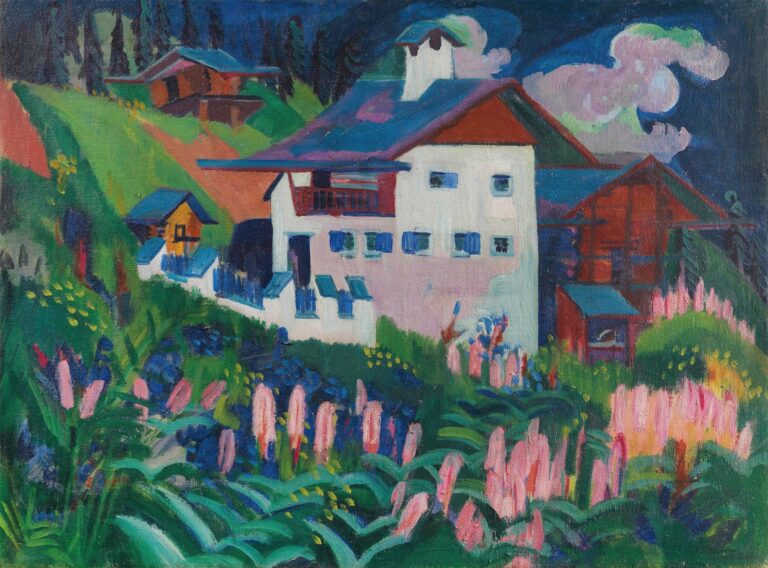
Discover Kirchner’s vibrant 1922 portrayal of his Davos home, where dynamic brushwork and lush wildflowers reveal an intimate vision of refuge and renewal.

Discover Kirchner’s vibrant 1922 portrayal of his Davos home, where dynamic brushwork and lush wildflowers reveal an intimate vision of refuge and renewal.
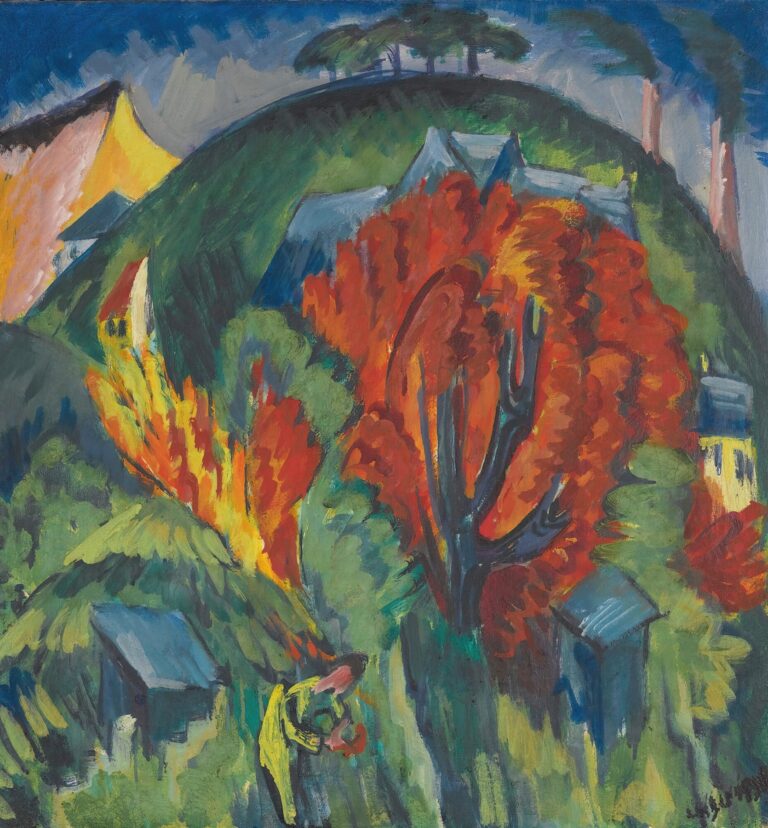
Explore Kirchner’s intense 1916 landscape Galgenberg in Jena, where flattened space, vivid reds and greens, and absence of figures evoke wartime trauma and historical memory.
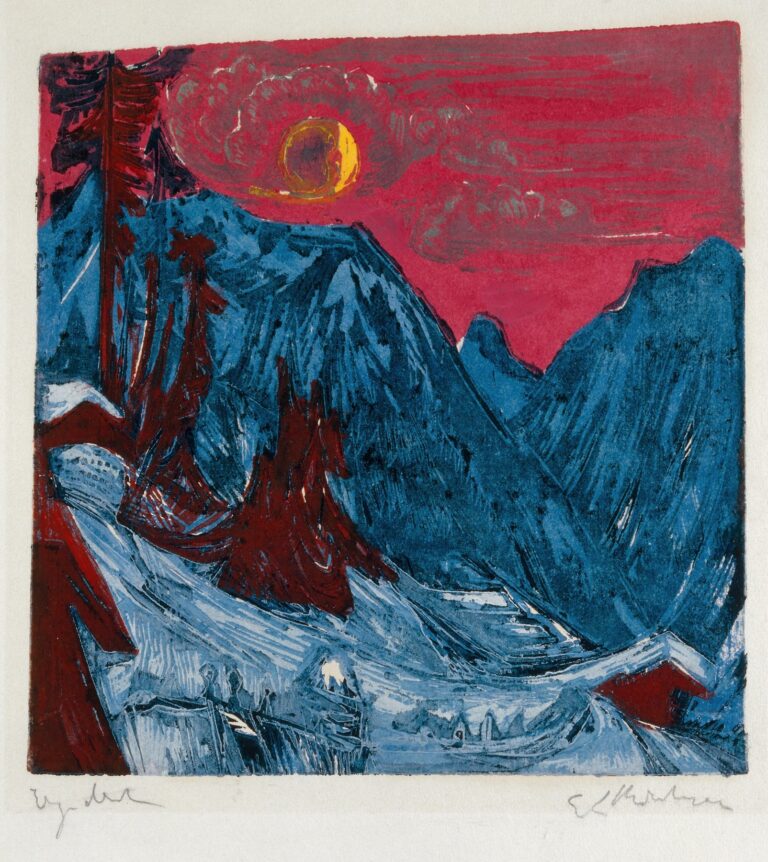
Experience Kirchner’s haunting 1919 woodcut Winter Landscape in Moonlight, where bold red skies, cobalt peaks, and a solitary chalet evoke postwar solitude and poetic intensity.

Explore Kirchner’s dynamic interplay of bold color, rhythmic form, and human presence in Forest Scene, Moritzburg Lakes, a defining work of early Expressionism.
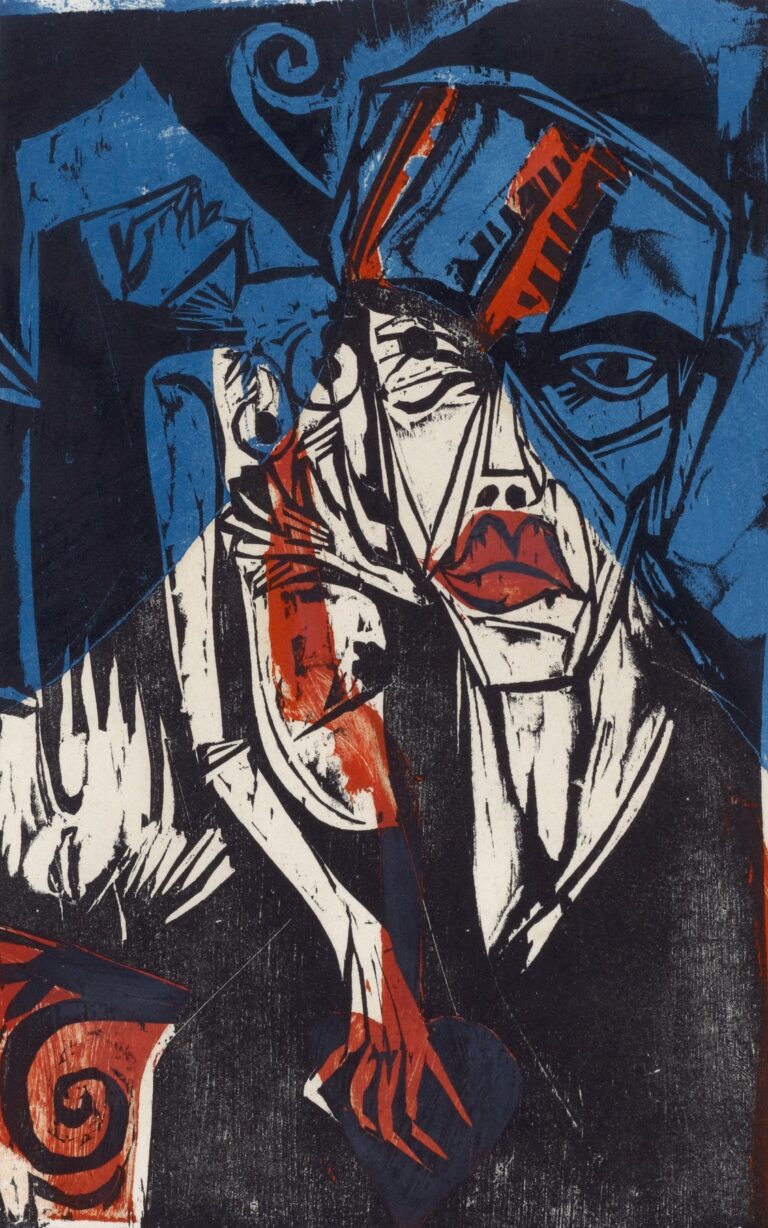
Discover Ernst Ludwig Kirchner’s 1915 woodcut Fights – Torments of Love, where jagged forms and contrasting blues and reds capture the raw agony and passion of emotional conflict.
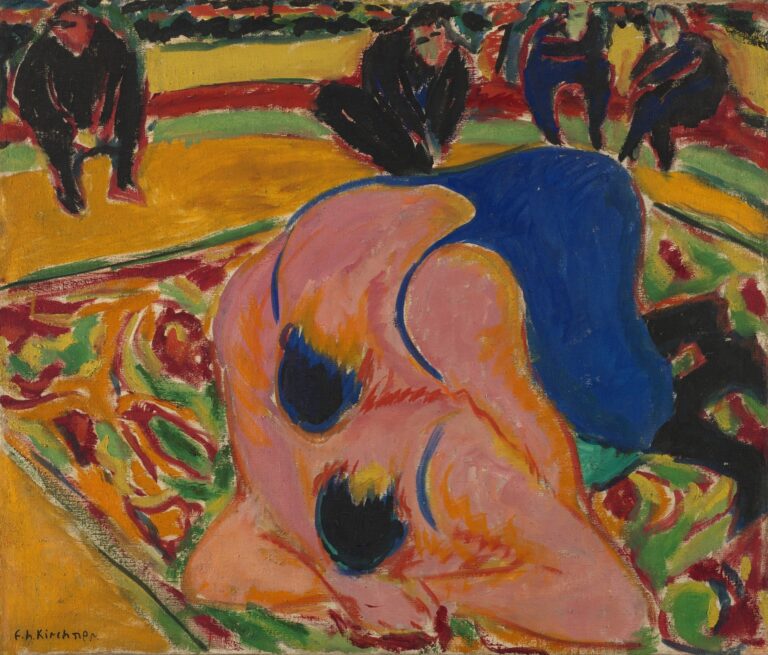
Explore Ernst Ludwig Kirchner’s bold Expressionist portrayal of two wrestlers locked in combat under the circus lights, where flattened space and electric color amplify the match’s raw intensity.
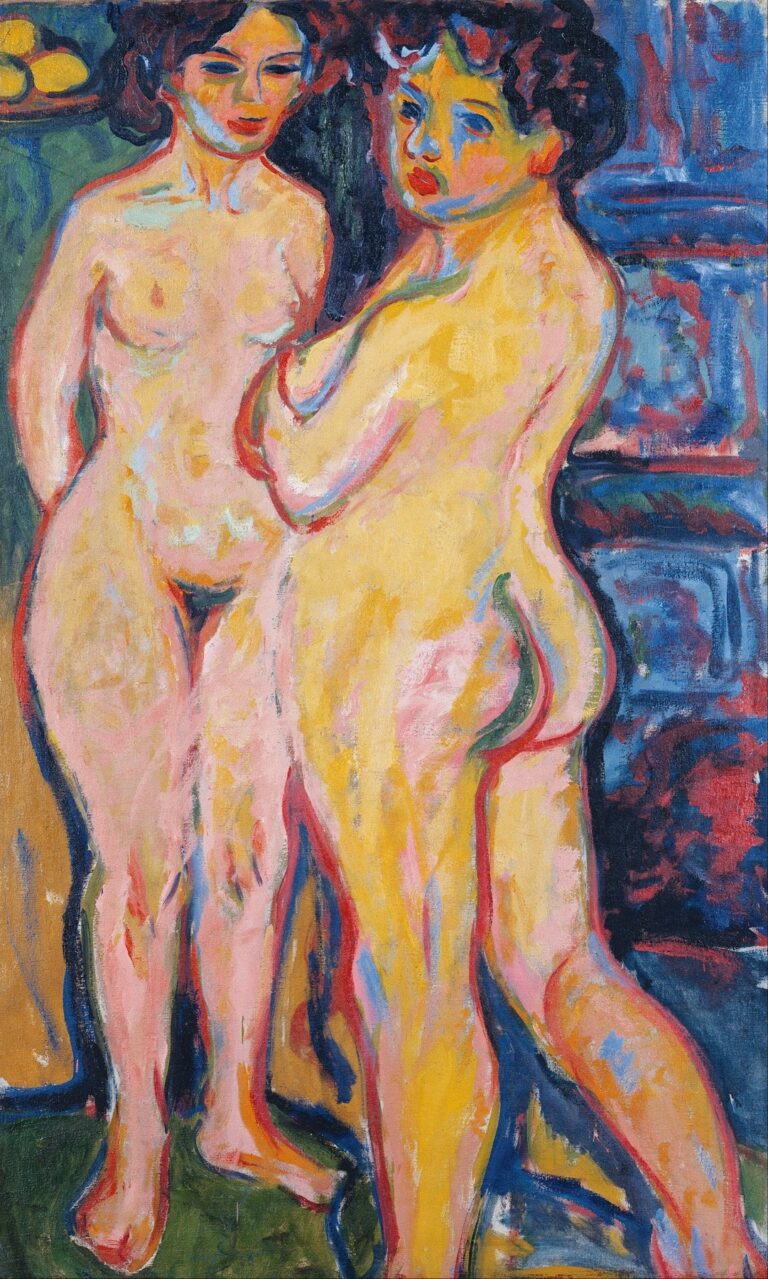
Delve into Ernst Ludwig Kirchner’s Nudes Standing by Stove (1907–08), a cornerstone of German Expressionism where bold color, fractured space, and candid nudity converge to capture intimate human presence amid urban modernity.

Dive into Ernst Ludwig Kirchner’s Naked Girls Talking (1907), a pioneering Expressionist work where bold color, dynamic brushwork, and intimate composition capture the psychological intensity of female confidences in every whispered gesture.
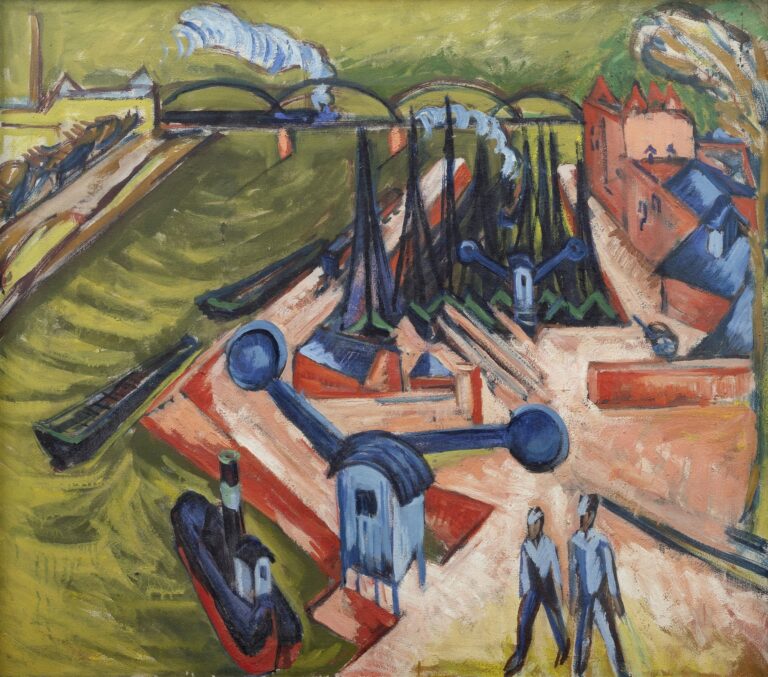
Study Ernst Ludwig Kirchner’s Western Harbour in Frankfurt am Main (1916), an Expressionist masterpiece where jagged forms, pulsating color, and flattened perspective evoke the industrial harbor’s dynamic energy and wartime anxieties.
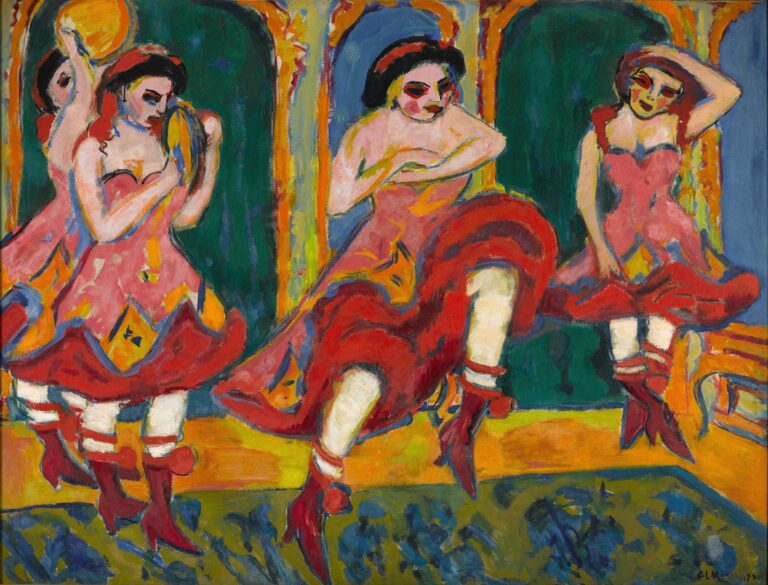
Explore Ernst Ludwig Kirchner’s Czardas Dancers (c. 1910), an Expressionist triumph where bold brushwork, vibrant color, and dynamic composition capture the exhilarating spirit of Hungarian folk dance on the Berlin stage.
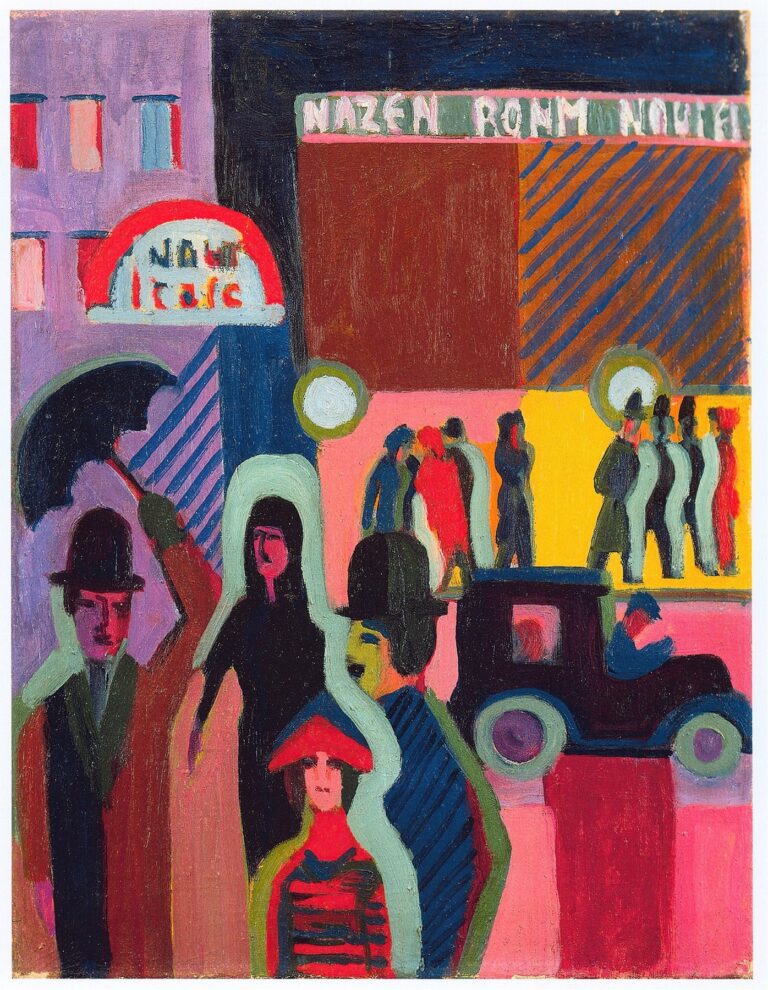
Dive into Ernst Ludwig Kirchner’s Store in the Rain (1927), a masterful Expressionist composition that fuses vibrant neon signage, dynamic brushwork, and flattened forms to capture Weimar-era urban isolation and modernity’s neon allure.
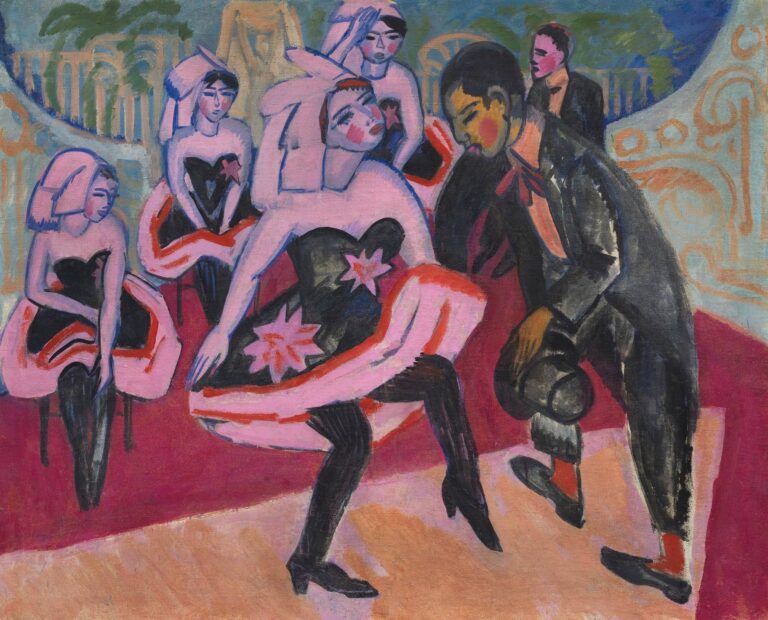
Ernst Ludwig Kirchner’s 1911 Expressionist painting “Tanz im Varieté” captures the energy and anxiety of Berlin’s nightlife through vivid colors and distorted forms. This in-depth analysis explores the work’s historical context, visual techniques, and emotional impact, revealing its role as a psychological and cultural portrait of modern life.